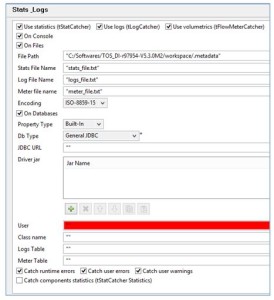Logging using Talend
Introduction: In this article, we will discuss about different methods of logging in Talend Open Studio. Talend is one of the widely used open source data integration tool in the market. Talend mainly uses three types of logging
- Statistics – Job execution statistics at component and job level
- Error – Job level errors, warning and exceptions
- Meter logging – Data flow details inside job
Best approach for logging is at project level. To enable project level logging, In Talend Open Studio, go to File, Project properties and enable or disable check boxes to start default logging at project level. See the screen shot below.
If you enable the logging at project level, then every new job created will inherit these settings. There are more settings and options to do if you enable project level logging. See below screenshot.
You can decide it to log the information to Console/File/Database. In case if you select any of File/Database or both options, then need to set few more default parameters like
For file names, you can pre-or post fixes the file name with Talend Date Time stamp function. Or else it will write into the same file for every execution and flush out earlier data. In case of databases, you can have existing created database. This scenario does not work when you don’t have any database on the target server this scenario fails. For general JDBC, you need to provide above parameters, else if you select any database such as MySQL, then provide username, password and other required parameter values.
If you enable project level logging, then there is no need to separately use all these components say, tLogCatcher to Log the errors, tFlowMeter to catch the data flow and tStatCatcher to catch the Errors, flow and statistics log. Talend throws the errors or exceptions whenever it occurs and displays its complete trace on the console. tLogCatcher if used with the help of tDie or tWarn, would catch those messages and can be redirected to the required database / file based on the requirement. In order to do this we need to take care of all above components, implement and test the job.
Advantage with this approach is that you get the brief error information in logs table which is automatically created by Talend. In addition to this information Talend also prints its error log trace on console. And the negative side of this is that the console trace is not stored in the log table.
Problem: In both above approaches, Talend does not store or redirect its console trace to database or file.

Best Open Source Business Intelligence Software Helical Insight is Here




Will the option described above redirect all warnings and error messages to the specified text file because when you just run jobs in the studio all output is thrown to the console and it sorts of slows down the job execution.